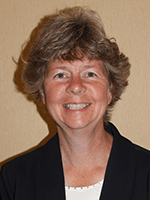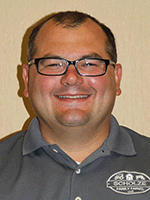
Building your best team – Laura Finger, Finger Family Farm LLC, Theo Scholze, Scholze’s Family Farm LLC, and Sherry Arnold, Busse’s Barron Acres
“Labor management, procuring employees … if it is not your biggest issue today, it will become one of your biggest issues,” Peter Coyne, Vita Plus dairy field service specialist, warned dairy producers at the Vita Plus Calf Summit.
Coyne moderated a panel of three Wisconsin dairy producers who shared how they creatively and successfully recruit, manage and retain a solid team of farm employees. The panel included Laura Finger, Finger Family Farm LLC; Theo Scholze, Scholze’s Family Farm LLC; and Sherry Arnold, Busse’s Barron Acres.
By Progressive Dairyman Editor Peggy Coffeen
“Labor management, procuring employees … if it is not your biggest issue today, it will become one of your biggest issues,” Peter Coyne, Vita Plus dairy field service specialist, warned dairy producers at the Vita Plus Calf Summit.
Coyne moderated a panel of three Wisconsin dairy producers who shared how they creatively and successfully recruit, manage and retain a solid team of farm employees. The panel included Laura Finger, Finger Family Farm LLC; Theo Scholze, Scholze’s Family Farm LLC; and Sherry Arnold, Busse’s Barron Acres.
Recruit the next generation of employees.
All three panelists try to make working on their farm appealing to young, local students.
 To avoid competing with sports and afterschool activities, Arnold asks high school kids to work a minimum of every other weekend. After graduating, she offers them a $500 tuition reimbursement per semester if they continue to return and work on weekends. This structure provides incentive for the young workers, and a weekend crew to relieve the full-time employees.
To avoid competing with sports and afterschool activities, Arnold asks high school kids to work a minimum of every other weekend. After graduating, she offers them a $500 tuition reimbursement per semester if they continue to return and work on weekends. This structure provides incentive for the young workers, and a weekend crew to relieve the full-time employees.
The Fingers set milking times to be feasible with the schedule of their high school employees with a night shift from 6 to about 10:30 p.m.
Scholze leverages the power of social media to appeal to younger workers.
Find ways to keep good workers employed.
When you find a worker with great potential, keeping them on the dairy may require some flexibility. Scholze keeps his workers’ quality of life in mind by striving to average no more than 50 hours per week per employee. Arnold promotes work-family life balance by splitting up the shift. Workers feed calves early in the morning, but can be home to see their children off to school; they return in the afternoon for the second feeding and are done it time to attend kids’ sports and activities.
 Set the tone for what you want to attract.
Set the tone for what you want to attract.
People like working at a clean place. Finger goes the extra mile to do the little things that don’t necessarily equate to a return on investment, but do go the distance with employee moral. That means maintaining the lawn and landscaping, mopping floors, and keeping bathrooms clean.
“That sets the bar,” she said.
 Communicate expectations, goals and plans for change.
Communicate expectations, goals and plans for change.
Scholze led his dairy through a generational transfer with no turnover of employees. He credits this retention during a time of change and transition to talking with each employee to inform them things would be changing and assuring they would be notified as those changes happened. He also finds that financial transparency resonates with workers. He shares the farm’s budget openly, which motivates employees to be mindful of expenses and come up with efficiencies on their own.
Finger Farms’ management team sits down with new hires to determine which tasks they most enjoy doing. They then empower employees by clearly stating the expectations in writing: “These are the things you said you were going to do, and therefore, we expect you to take care of them.”
Meet regularly.
Regular meetings are part of the routine on all three operations. At Finger Family Farms, a milker meeting is held monthly, and the agenda always addresses three key points: “the good, the bad and the ugly.” Arnold meets with her managers every Tuesday morning to go over plans for the week while they enjoy a homemade breakfast. Once a month, all staff come together for a lunch meeting with fun highlights, like speakers and door prize drawings.
Ultimately, putting people first is the foundation for a reliable, long-term workforce.
Scholze concluded, “When you look at a budget, labor is 20 percent of the cost. Eighty-percent is other stuff, and if you take care of the 20 percent, the other stuff will fall into place.”
| Category: |
Employee management Starting Strong - Calf Care |

